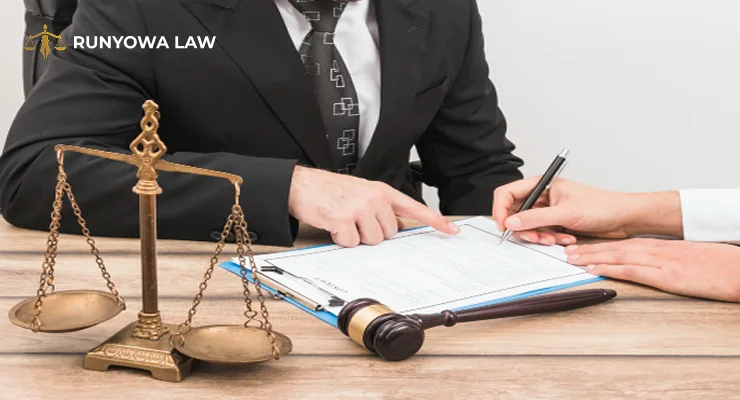Insurance is designed to offer financial protection during uncertain times. However, when a claim is denied, delayed, or undervalued, it can cause frustration and stress. Fortunately, policyholders have several avenues to resolve disputes effectively. This guide walks you through a comprehensive, step-by-step process for handling insurance claim disputes in Canada, ensuring you understand your rights and options.
1. Understand the Insurance Claim Denial
a. Reasons for Denial
Claims may be denied for various reasons:
- Incomplete or inaccurate information
- Exclusions in the policy
- Missed deadlines or policy lapses
- Fraud or suspected misrepresentation
- Insufficient documentation
b. Review the Denial Letter
- Read the insurer’s denial letter carefully
- Identify the specific reason and clause cited
- Make note of any deadlines for appeals or response
2. Revisit Your Insurance Policy
a. Know Your Coverage
- Re-read your policy documents
- Understand limits, exclusions, and conditions
- Identify your obligations as a policyholder
b. Compare Claim vs. Coverage
- Cross-check the denied claim against what is covered
- Look for ambiguous terms or conflicting interpretations
c. Take Notes
- Record every communication, event, or document related to the dispute
3. Gather and Organize Documentation
a. Collect Supporting Evidence
- Photos or videos of damage
- Medical or repair bills
- Police reports, if applicable
b. Communication Records
- Emails, letters, and notes from phone calls with the insurer
c. Expert Reports
- Appraisals, evaluations, or third-party assessments to support your claim
4. Contact Your Insurance Adjuster
a. Request Clarification
- Politely request a detailed explanation of the denial
- Ask about missing documents or errors you can correct
b. Seek Reassessment
- Provide new or updated documentation
- Ask for a supervisor if your case lacks proper attention
c. Remain Professional
Maintain calm, respectful communication even when frustrated
5. File a Formal Internal Complaint
a. Use the Insurer’s Complaint Process
- Most insurers have formal complaint handling departments
- Request a copy of their complaint resolution guide
b. Submit a Written Complaint
- Clearly explain your case, attach evidence, and state what resolution you seek
- Keep copies of all documents
c. Allow Time for Response
- Insurers typically have 30 days to respond to internal complaints
6. Engage the Insurance OmbudService (Canada)
a. What Is It?
- A free, independent organization helping resolve disputes between consumers and insurance companies
b. When to Use It
- After the internal complaint process fails
- If you feel the insurer did not treat your claim fairly
c. How It Works
- Submit a written request
- OmbudService reviews the complaint and mediates a resolution
- Not legally binding but often effective
7. Seek Legal Advice or Representation
a. When to Hire a Lawyer
- High-value or complex claims
- Cases involving personal injury or major property loss
- Allegations of insurer bad faith
b. Legal Tools
- Demand letter from your lawyer
- Civil lawsuit for breach of contract or bad faith practices
c. Legal Costs
- Some lawyers work on contingency (only paid if you win)
- Weigh the legal fees against potential claim value
8. Consider Mediation or Arbitration
a. Mediation
- Involves a neutral third party helping both sides reach a settlement
- Confidential, faster, and less expensive than court
b. Arbitration
- Binding process where an arbitrator issues a decision
- Faster than litigation but usually limits your ability to appeal
c. When to Consider ADR
- If insurer agrees
- Complex or deadlocked cases
9. File a Civil Lawsuit (Last Resort)
a. When to File
- When all other dispute resolution attempts fail
- When significant damages or legal principles are at stake
b. Court Process
- File claim in small claims court (under $35,000 in many provinces) or superior court for larger claims
- Present evidence and arguments
- Judge rules on liability and compensation
c. Time Limits
- Most provinces impose a 2-year limitation period from when the dispute was discovered
10. Prevent Future Claim Disputes
a. Understand Your Policy
- Read it fully before signing
- Ask questions to clarify unclear terms
b. Document Everything
- Save all communications and proof of payments
c. Work With a Broker
- A licensed insurance broker can explain policies and help with claims
Frequently Asked Questions (FAQs)
Q1. Why was my insurance claim denied?
Common reasons include policy exclusions, missing documents, late filings, or misinterpretation of coverage.
Q2. Can I appeal a denied claim?
Yes. You can file an internal complaint and, if needed, escalate to the Insurance OmbudService or court.
Q3. How long do I have to dispute a claim denial?
Most provinces allow up to 2 years from the date you became aware of the denial.
Q4. Will hiring a lawyer guarantee success?
No, but legal representation increases your chance of success in complex or high-value cases.
Q5. What if the insurer acts in bad faith?
You can sue for damages beyond the claim value, including emotional distress and punitive damages.
Final Thoughts
Disputing an insurance claim can feel daunting, but having a clear, structured plan improves your chances of success. From understanding why your claim was denied to escalating through formal channels, each step provides an opportunity to reach a fair resolution. Staying organized, respectful, and persistent—and seeking legal or professional help when needed—can help you secure the compensation you deserve.




